Lenovo Launches Ultra-Thin ThinkPad P1: X1 Carbon Meets Workstation
by Anton Shilov on August 13, 2018 12:02 AM EST- Posted in
- Laptops
- Intel
- Lenovo
- Quadro
- NVIDIA
- Coffee Lake-H
- ThinkPad P1
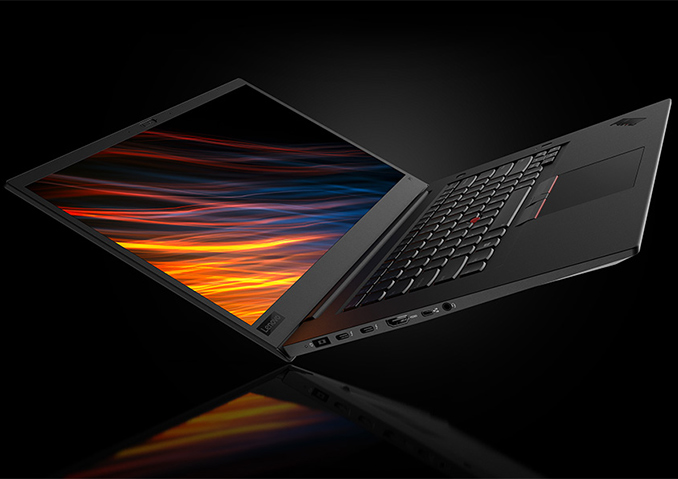
Lenovo on Monday introduced its new ThinkPad P1 workstation, which brings together a 4K 15.6-inch display, high performance, and portability. The system can integrate Intel’s latest Core or Xeon processors with up to six cores, NVIDIA’s Quadro discrete graphics, as well as a massive amount of DRAM and solid-state storage. At the same time, the P1 is one of the thinnest and lightest laptops of its class on the market today.
The Lenovo ThinkPad P1 mobile workstation is based around Intel’s 8th Core i5/i7/i9 or Xeon processor accompanied by up to 64 GB of DDR4-2667 (with or without ECC) and up to 4 TB solid-state storage. It is noteworthy that Lenovo uses user-upgradeable SO-DIMM memory modules, not soldered-down chips, like many other PC makers do with ultra-thin laptops. When it comes to graphics, models with discrete GPU feature NVIDIA’s Quadro P1000 or P2000. Cheaper versions could potentially rely on Intel’s UHD 620 iGPU, but Lenovo is not announcing any such products today.
Lenovo intends to offer two display options with its ThinkPad P1. The more advanced SKUs are outfitted with a multitouch 15.6-inch 10-bit IPS LCD with a 4K Ultra-HD (3840×2160) resolution, a 400 nits brightness, and covering 100% of the AdobeRGB color gamut. The more affordable models will come with a non-touch Full-HD (1920×1080) IPS panel featuring a 300 nits brightness and covering 100% of the sRGB color range.
Moving on to connectivity. On the wireless side of things, the Lenovo ThinkPad P1 has Intel’s Wireless-AC 9560 802.11ac Wi-Fi solution featuring up to 1.73 Gbps throughput over 160 MHz channels as well as supporting Bluetooth 5.0 tech. As for hardware interfaces, the ThinkPad P1 is equipped with two Thunderbolt 3 ports (unknown controller), two USB 3.1 Gen 1 Type-A connectors, a mini GbE header (requires a dongle), an HDMI 2.0 output, an optional smart card reader, a 4-in-1 card reader, a webcam, a fingerprint scanner, and a TRRS audio port.
When it comes to design, the Lenovo ThinkPad P1 takes a lot of pages from the popular ThinkPad X1 Carbon series. It also comes in black carbon fiber chassis that is rugged enough to take bumps of everyday use by a road warrior. Lenovo says that the new ThinkPad P1 can withstand cold, heat, humid, dust, fungus (ed: !), shocks and other harsh environments, just like its smaller brother. Besides, the two flagship ThinkPads also have similar ergonomic keyboards.
Usage of carbon fiber enables Lenovo to make the laptop thinner and lighter than most 15.6-inch notebooks available today: it is just 17.8 mm (0.7 inch) thick and it weighs 1.7 kg (3.76 pounds). When compared to the latest MacBook Pro 15.6-inch, the latter will be thinner (at 15.5 mm/0.61 inch), but heavier (at 1.83 kg/4.02 pounds). Meanwhile, the ASUS ZenBook Pro 15 UX550 is both thicker (18.9 mm/0.74 inch) and heavier (1.86 kg/4.1 lbs) that the new ThinkPad P1.
All ThinkPad P1 models will come equipped with an 80 Wh battery, but the company does not disclose their battery life, possibly because there will be too many different configurations. It is noteworthy that Lenovo bundles a special miniature 135 W charger with a proprietary connection with the P1, and the laptop cannot use USB-C for charging.
Lenovo will begin to ship the ThinkPad P1 in late August, prices will start at $1,949.
| Lenovo's ThinkPad P1 | |||
| ThinkPad P1 FHD | ThinkPad P1 4K UHD | ||
| Display | Type | IPS | |
| Resolution | 1920×1080 | 3840×2160 | |
| Brightness | 300 cd/m² | 400 cd/m² | |
| Color Gamut | ~100% sRGB | 100% AdobeRGB | |
| Touch | No | Yes | |
| CPU | Intel's 8th Generation Core i5/i7/i9 or Xeon processors with six cores. Select SKUs will be powered by vPro-enabled CPUs |
||
| Graphics | Integrated | UHD Graphics 620 (24 EUs) | |
| Discrete | NVIDIA Quadro P1000 (GP107GL, 640 SPs) NVIDIA Quadro P2000 (GP106GL, 1024 SPs) |
||
| RAM | up to 64 GB DDR4-2667 with or without ECC, depending on CPU |
||
| Storage | up to 4 TB PCIe SSD with RAID 0/RAID 1 | ||
| Wi-Fi | Intel Wireless AC-9560 2×2 802.11ac Wi-Fi with up to 1.73 Gbps | ||
| Bluetooth | Bluetooth 5 | ||
| Thunderbolt | 2 × USB Type-C TB3 ports | ||
| USB | 2 × USB 3.1 Gen 1 Type-C | ||
| HDMI | HDMI 2.0 | ||
| GbE | Native, with a dongle | ||
| Fingerprint Sensor | Yes | ||
| Webcam | 720p webcam 720p webcam with IR for Windows Hello |
||
| Other I/O | Microphone, stereo speakers, TRRS audio jack, joystick, trackpad, card reader, optional smart card reader, etc. | ||
| Battery | 80 Wh | ||
| Dimensions | Thickness | 18.4 mm | 0.7 inch | |
| Width | 361.8 mm | 14.2 inch | ||
| Depth | 245.7 mm | 9.7 inch | ||
| Weight | 1.7 kilograms | 3.76 lbs | ||
| Operating System | Windows 10 Pro for Workstations (with Xeon CPUs only) Windows 10 Pro Ubuntu Linux (pre-load) Redhat Linux (certified) |
||
| ISV Certifications | ArcGIS, AutoCAD, CATIA, Creo, Inventor, Microstation, NX, PDMS, Revit, Solid Edge, SolidWorks, Vectorworks | ||
Related Reading:
- Lenovo Unveils ThinkPad P52: 8th Gen Core or Xeon, Quadro 3200, and 128GB RAM
- Lenovo Unveils New ThinkPad X1 Carbon, X1 Yoga Laptops: 8th Gen Core, Dolby Vision HDR
- Lenovo Re-Engineers ThinkPad X1 Tablet: 13-inch LCD, Quad-Core i7, TB3, 9.5 Hrs
- Lenovo’s ThinkPad T580 Launched: Quad-Core CPU, 4K LCD, 32 GB RAM, Up To 27 Hrs Battery Life
- Lenovo Announces New ThinkStation P520/P520C and ThinkPad 52s: Up to 18 Core Xeon-W, Quadro Graphics


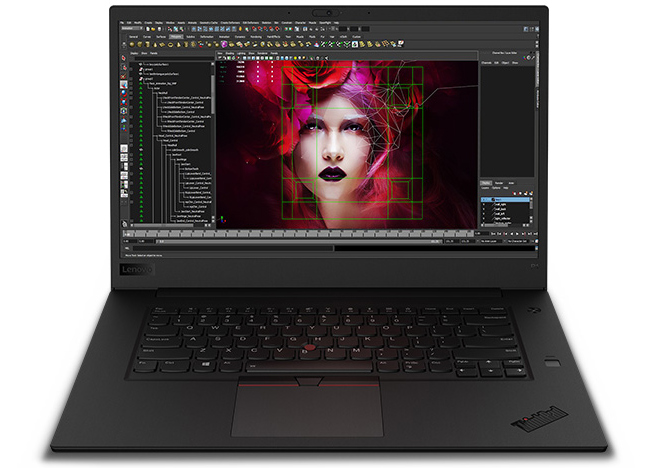
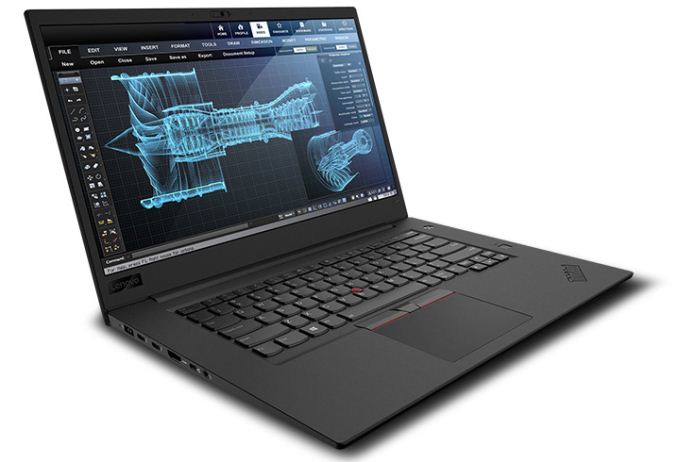
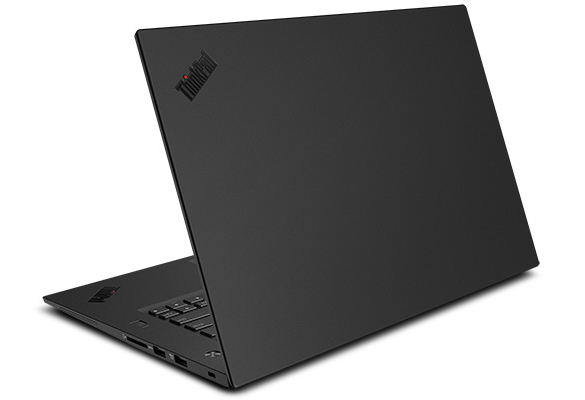

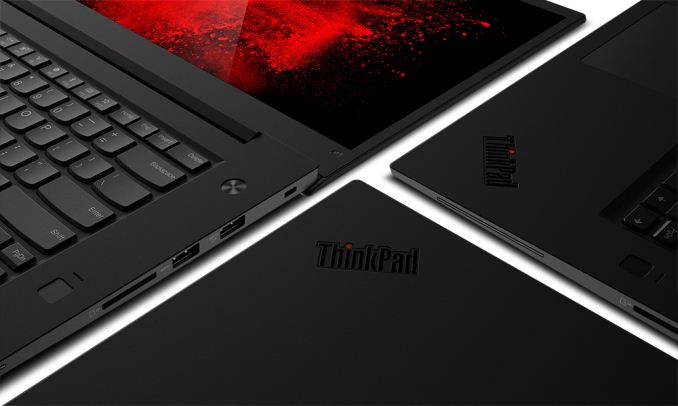








24 Comments
View All Comments
ikjadoon - Monday, August 13, 2018 - link
"Anecdotal" experience ahead, but I am just hearing bad stuff about Lenovo quality control. This P1 sounds exciting (I'm tired of 13" laptops), but then I remembered this article: https://www.ultrabookreview.com/21014-dr-servicelo...I mean, *everybody* praised the X1 Carbon and this is the kind of quality control running in the background?
As Brett Howse here realized with the first Surface Book and Avram Piltch, the editor-in-chief at Tom's Hardware, with his Lenovo X1 Carbon 6th gen: the irregularities of quality control among all laptop manufacturers is beyond frustrating. We just "accept" the panel lottery, the keyboard lottery, the CPU fan lottery, the touchpad lottery, the battery degradation lottery, the on-site tech lottery, etc.
At least with a desktop, you can build it yourself and suss it out. With laptops, you're stuck because some robot or algorithm decided you get "parts bin 321", when all the reviews of the laptop were from "parts bin 897"...who just 'happen' to be at the edge of "this is within tolerance" chasm they've created. This multiple sourcing isn't an issue for phones, because we rarely use phones as tools. But laptops gets 6+ hour, intense productivity work each day: every frustration is a weed in a garden.
Seems like $1800+ isn't enough for reliable control. Hell, I've had similar experiences with my $250 Dell Inspiron 13. I hope manufacturers realize, "This is a lose-lose game for all involved: just sell the product we paid for and tighten your tolerances."
/old-man-rant
bemymonkey - Monday, August 13, 2018 - link
This is normal across all brands these days, unfortunately. I've found that the only way to get reliable laptop hardware 95% of the time is to buy used from a trusted source, or from a store with a good return/exchange policy.Lately I've been buying most of my Thinkpads about two years after release at the earliest, usually from people who I've talked to on forums and know wouldn't tolerate a flaky machine or would at least post about the issue to see if they can get it fixed.
Buying a new machine, on the other hand, is a crapshoot - last time I tried, it took me 2 exchanges to get one that was acceptable.
close - Monday, August 13, 2018 - link
I own 4 Carbon X1s of different generations. They all have one major issue or another. For example LCD burn in where you can read the content of my screen for 30s after I change it (using a proper background for contrast).I owned basically every generation of Ts and Xs until a few years ago. I know it's anecdotal but the trend is there and it's getting worse. My X200 just turned 10 years old. Wonder how my 1 year old X1 will do in 2027...
np76 - Monday, August 13, 2018 - link
Yep. I tried to buy an X1 Carbon 6th gen but gave up after receiving back to back defective units (bad CPU fan followed by a bad touchpad chassis).It's a great laptop, in theory.
lilmoe - Monday, August 13, 2018 - link
I really wish it was about the price.I'd gladly pay 25% more for a guaranteed top bin on all my parts. You can also buy your laptops _almost_ bare bones, and get all the extras you need after market.Or, you can get yourself comfortable with a brand known for quality hardware for a particular "Pro" series (HP Probooks/zBooks, Dell Latitude/Precision, or Thinkpad T/P series) and order the 2nd or 3rd generation hardware *spec refresh* WHEN THEY ARE FIRST ANNOUNCED because that's when most of the top bin parts are sold and PRAY that there isn't any major design flaw in one or two of the parts. This is your best chance to get what you want in my experience, since most flaws in the earliest batch are not bin related, but design related.
Kaggy - Monday, August 13, 2018 - link
Nice to see Bluetooth 5, it is almost non existent for such a long time.gobaers - Monday, August 13, 2018 - link
What is it gonna take to offer the seven row layout keyboards on these premium devices? It would make them so much more compelling.StevenD - Monday, August 13, 2018 - link
We're making a portable workstation.Nice. Battery life?
Dunno.
Type c charging?
Hell no.
Only with proprietary charger?
Yup.
It was at that point that they should have realised, they fucked up!
olafgarten - Monday, August 13, 2018 - link
USB-PD only supports up to 100w, that is most likely the reason for a proprietary charger.Samus - Monday, August 13, 2018 - link
HP’s equivalent zBook uses a 90w charger in restricted mode (it normally wants a 130-150w) and powers via USB-C as low as 60w but will not charge unless in standby. When the power demands call for more than 60w it will use hybrid power (battery+charger)Even my Dell Latitude 5490 does this...it ships with a 60w barrel charger (identical AND compatible with HP ‘pre-blue’ tip) but has no issue running off a 45w USB-C connection, occasionally/rarely seeing the battery light flicker off letting me know it’s no longer charging and using hybrid power for a moment...that’s right it runs and charges off 45w when the design profile calls for 60w. It just depends on the demands of the user and how fast you want your battery to charge (the Dell BIOS has 7.5w and 15w customizable hybrid charging profiles for under-current adapters)
All of this is absent from Lenovo and it’s 2018, USB-C PD has been around for years. Even NINTENDO is on the USB-C bandwagon.
This is just another reason IT departments are ditching Lenovo...the primary reason being piss poor support.